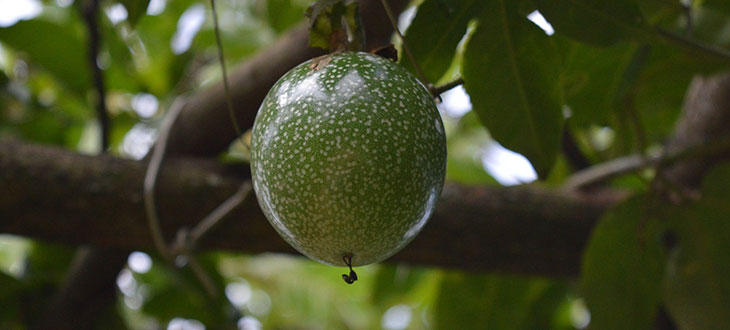3 Vines With Fruits Like Green Balls
Found a vine plant with fruits like green balls and need help identifying it? Here are several plant species with these particularities.
Vine plants are plants with a growth habit of climbing or trailing. While there are many species of plants that grow like vines, not all of them produce globular green fruits that look like small balls.
This article lists several plants that might fit this description.
1. Maypop (Passiflora Incarnata)
Maypop (Passiflora incarnata) is a climbing perennial vine plant in the genus Passiflora. It is found both growing as a wildflower in the United States, but it is also cultivated for its fruits.
It is popularly known under several names such as purple passionflower, maypop, wild passion vine, true passionflower, etc.
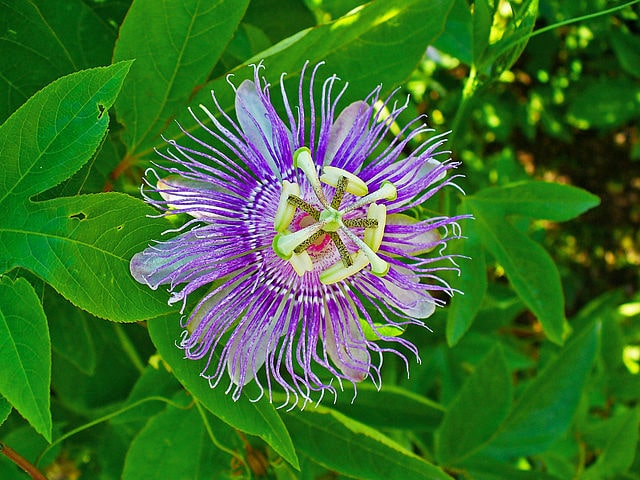
Maypop is a fast-growing plant with climbing or trailing stems. It easily clings to various supports with the help of tendrils and creates a beautiful, natural mesh on wire fences and trellises.
The leaves of Passiflora incarnata are mid to dark green, petioled, alternate, and palmately with 3 to 5 lobes. Its stems are long and trailing and either smooth or covered with short soft hair.
Around July, the purple passionflower produces gorgeous, exotic-looking large flowers, with bluish-white petals and a corona colored with shades of white and purple.
The fruit of maypop is an oval fleshy berry and can reach roughly the size of a hen egg. It is initially green in color and at maturity becomes almost orange. The fruit contains multiple seeds and its pulp is edible.
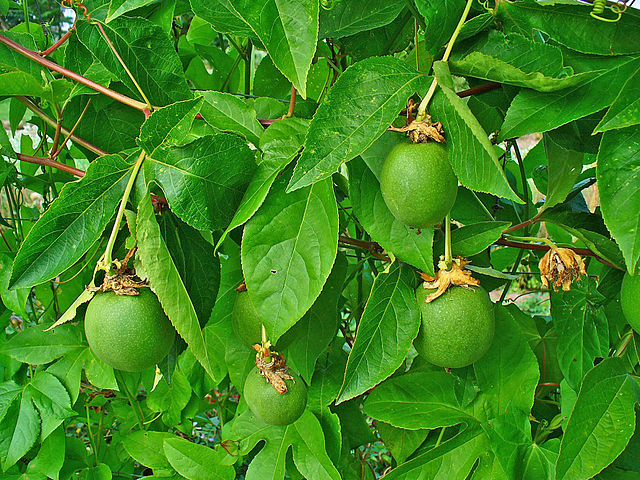
Other species in the genus Passiflora also bear similar-looking fruits. However, not all of them are edible, and some may even be toxic. Therefore, make sure you identify correctly the edible species before consuming their fruits.
2. Bittersweet Nightshade (Solanum Dulcamara)
Bittersweet nightshade (Solanum dulcamara) is a woody perennial vine in the genus Solanum and is native to Eurasia and naturalized in many parts of the world.
It is commonly known by many names. The most familiar are bittersweet nightshade, bitter nightshade, climbing nightshade, trailing bittersweet, or trailing nightshade.
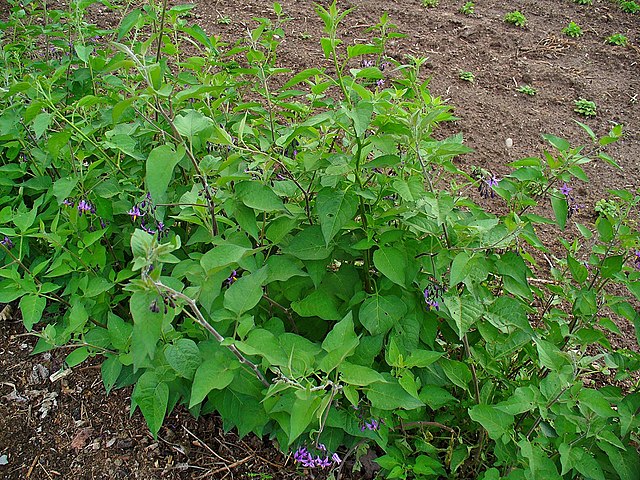
Solanum dulcamara belongs to the botanical family Solanaceae (plants generally known as nightshades). The same family includes well-known garden-cultivated vegetables such as tomatoes, potatoes, bell peppers, or eggplants.
Many plants in this family contain a toxin called solanine in various parts of the plants. So it is the case of Solanum dulcamara whose parts are poisonous to humans and livestock.
Bittersweet nightshade grows as a vine that runs over other plants. It can reach several meters in height in the proper conditions and where it finds a good support to grow on.
Its leaves are dark green, long, arrowhead-shaped, and usually lobed at the base.
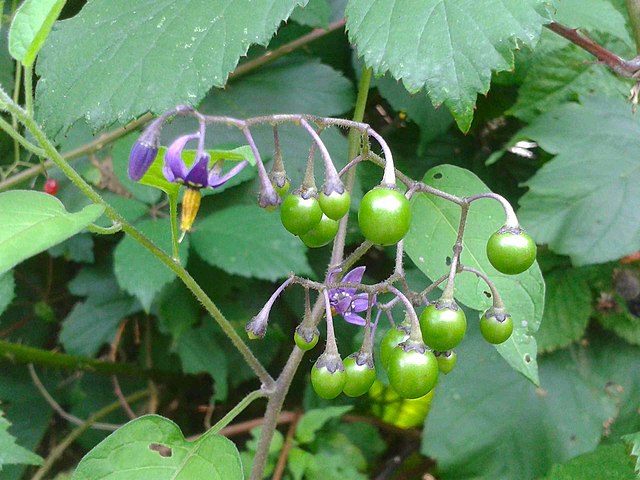
During the summer, it produces clusters of purple flowers which later turn into ovoid tomato-like berries which are green initially and later get a red color. These berries are toxic to humans and to many species of animals.
3. Creeping Cucumber (Melothria Pendula)
Creeping cucumber (Melothria pendula), also known as the Guadeloupe cucumber, is a climbing perennial vine in the cucumber family, Cucurbitaceae. It is predominantly found in the southeast of the United States.
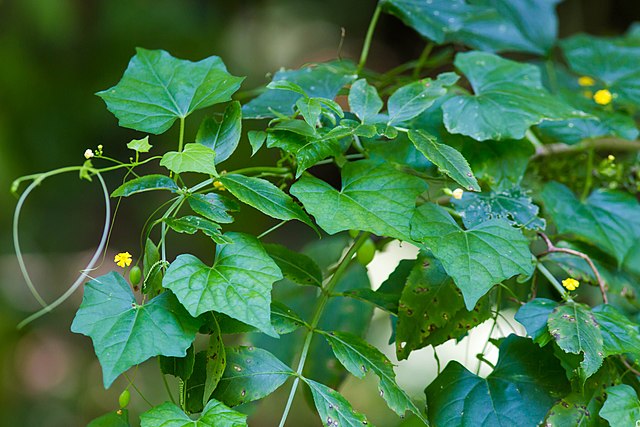
Melothria pendula vine is pretty similar to the cultivated cucumber, but what really sets it apart is its fruits. Instead of having elongated fruits like most species of known cucumbers, this plant produces green, spotted, smooth, ball-shaped, tiny berries that look like miniature watermelons. They get a black color when fully ripe.
The edibility of the fruits of creeping cucumber is doubtful. Many sources claim that it’s safe to eat them while they are green and carry powerful laxative effects when ripe, while others refer to them as being mildly toxic.
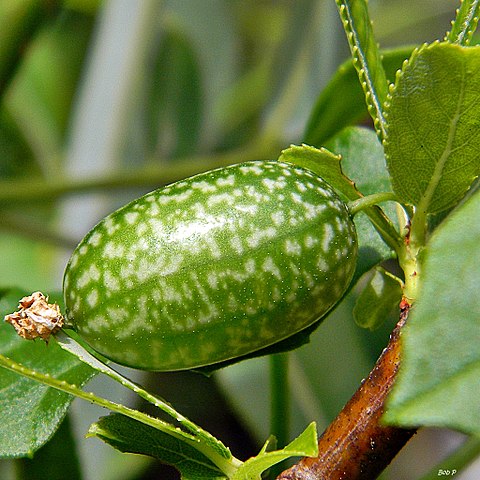
The leaves are green, and palmated, with 3 to 5 triangular lobes and comparable in aspect to the ones of common ivy. The stems grow coiled tendrils that enable the vine to climb on anything it finds nearby.
The flowers are tiny, yellow, and cup-shaped.
Final Word
These are just a few species of plants that grow like vines and produce green and small ball-like fruits.
Never eat the fruits of these plants if you cannot identify their species exactly and if you do not know for sure if they are edible or not. Some fruits and other part parts can contain very harmful substances for humans or animals.
If you have found an unknown plant and need help identifying it, we recommend you take a look at our list of 10 mobile apps for plant identification. These apps are very handy and enable you to determine the species of unknown plants by simply taking a picture of one of their parts, like leaf, fruit, flower, or bark in the case of trees.

